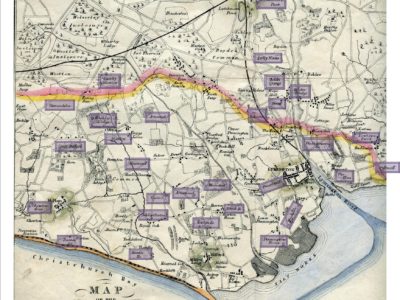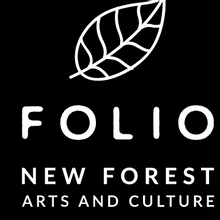The estate derives its name from the owner during the middle of the 17th century: a George Stanley made a claim to Forest Rights in 1670. However, records indicate that the present mansion was the first to be built on the site, constructed for Mrs Gunning-Sutton. The 15-bedroom red brick house with gabled roofs and partly rough-cast and stuccoed panels sat in extensive grounds, with winding carriage drives, a terrace, flower gardens, woodland, glasshouses, vinery and a walled garden.
The estate extended from Ashley Common Road to Vaggs Lane and from Sway Road to Ashley Lane and included two lodges, staff cottages and two farms. According to the sales details, Stanleys was ‘an enjoyable and very attractive residential and sporting estate’. It was appealing for its healthy air, proximity to the Forest for hunting and to the coast for yachting as well as fishing on the Avon and Stour and golf at Barton. Its various colourful owners from 1880 to the 1920s were very involved in local life in Tiptoe and Hordle. It is now run as a caravan site.
The owner of Stanleys at the end of the 19th century was Mary Gunning-Sutton, who was the mother-in-law of Lord Eslington, who in turn was the son of the Earl of Ravensworth. The Ravensworth baronetcy was created in 1642 but the family fortune was made in the Industrial Revolution from their ownership of coal mines in north-east England. By 1874 their full earldom was created. Mary’s daughter, also Mary, married Henry Liddell 2nd Earl of Ravensworth. The Earl had two daughters, Lilian and Mary, who lived with their grandmother at Stanleys and inherited the estate on her death in 1906.
Lady Mary married and moved away but Lady Lilian was very involved in local life. She was instrumental in the building of St Andrew’s Church at Tiptoe, supported the school at Wootton and was clearly concerned for the welfare of her tenants and local people. Lilian married Capt Gerald Digby in 1906 and built Holme Farm at Boundway but later moved to Dorset. Lady Lilian, writing in the 1950s, clearly felt she had a duty to the people of Tiptoe:
“They were largely of the forest people, many in very poor cottages of mud and thatch and had been very much neglected both spiritually and in all ways and there was some real poverty. A few were better off with a cow and a pig and a few hens. Just at Tiptoe there was a little cluster of baker (Thorne), carpenter (Chase) and village shop and blacksmith (Ingrem).”
In 1901 Stanleys was sold to Lady Crewe who was then living on the Isle of Wight. The family also owned Calke Abbey in Derbyshire. Her younger son, Hugo Harpur Crewe also lived at Stanleys. Dorothy Izzard (nee Jobling) came to Stanleys with the Crewes as her father was the Head Gardener. She wrote: “I remember meeting Hugo Crewe. He asked if I was a good girl at school and patted me on the head. He thought a lot of my father, as unfortunately he was a cocaine addict and apparently at certain times my father was the only one who could ‘manage’ him.”
The Crewes had a large indoor and outdoor staff. Inside there was “a butler, housekeeper, two footmen, lady’s maid, valet, cook and sundry housemaids, kitchen maids, scullery maids and a man to do all the knives, shoes and boots and lamps, all oil in those days of course.” Outside staff included a coachman, groom, three gardeners, gamekeepers and a separate laundry.
Dorothy goes on to recall: “[Mr Harpur Crewe’s nephew and nieces] visited Lady Crewe and I can remember them particularly one Christmas, when they played the piano and sang to entertain the staff. We had a big Christmas tree in the long Drawing Room which had a veranda and French windows down one side, and a beautiful conservatory at one end.” When Hugo Harpur Crewe died in 1905, Lady Crewe and Miss Crewe moved away, leaving the Joblings in charge, until it was sold to Capt and Mrs Vicars Miles.
Stanleys was owned by the Vicars Miles during the First World War. At that time there were growing concerns about food shortages because of submarine attacks on merchant ships. A school dinner project was set up for Wootton School, then at the iron church in Tiptoe. In 1917 Mrs Vicars Miles offered the loan of the lodge and suitable cook to prepare dinners for the children and hot lunches were provided from September 1917 until February 1919.
During the war the 1st Hordle Girl Guides was set up and met at Stanleys and the guides used to track through the woods, learn to tie knots and received first aid training from the Hordle district nurse. Locals from Ashley, Tiptoe and Hordle used to attend performances on the terrace of the house.
fd














